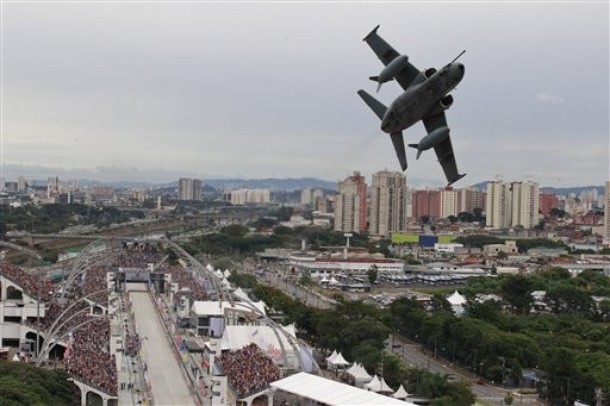
The Aircraft, Designated F-39 By The Brazilian Air Force, Will Be Officially Presented Next Month.
The first Gripen-E for the Brazilian Air Force flew for the first time in Brazil on Sept. 24, 2020. The aircraft arrived on a ship in the port of Navegantes, where it was offloaded and moved by road, under strict surveillance, to the local airport. After a taxi test on the runway at Navegantes airport, the F-39, as it will be designated by the Brazilian Air Force, flew to Embraer´s facility in Gavião Peixoto (São Paulo State), where a Gripen Flight Test Center has been established to continue the flight test program.
RELEASE: The first Brazilian Gripen has flown in Brazil https://t.co/gusC5zpzsW pic.twitter.com/D9iFulAcVx
— Saab AB (@Saab) September 24, 2020
For the Brazilian Air Force Commander, Lt. Brig. Antonio Carlos Moretti Bermudez, the arrival of the first F-39 Gripen aircraft is a major milestone for the project: “It is an immense satisfaction for the Brazilian Air Force to see this aircraft flying on national territory. The F-39 Gripen, the new Brazilian Air Force multi-mission aircraft, will be the backbone of Fighter Aviation and it reaffirms the FAB’s commitment to maintaining the country’s sovereignty and to defend the twenty-two million square kilometres under its responsibility”.
Gripen has arrived in Brazil! 🇸🇪 🇧🇷 A historic moment last Sunday September 20, marking a new chapter in a fantastic story. #BrazilianGripen #gripen #smartfighter #avgeek #military #airforce @fab_oficial pic.twitter.com/tfcl0pt2nW
— Saab AB (@Saab) September 22, 2020
From port to hangar. The Brazilian Gripen E, closely monitored during its trip from the port of Navegantes to the city’s airport. To be continued! #BrazilianGripen #avgeek #smartfighter #earlybird pic.twitter.com/ENck787T9w
— Saab AB (@Saab) September 22, 2020
The flight testing to be performed by Embraer in Brazil will be fully integrated with the one started by Saab in 2017. According to the press release, the Brazilian tests will include testing of the flight control system, environmental control system and the behavior of the aircraft in tropical climate conditions, other than the testing of Brazilian specific systems, such as the encrypted Link BR2 communication system, and weapons integration.
The President and CEO of Embraer Defense & Security, Jackson Schneider, explained the extension of this partnership: “Embraer will play a leading role in the execution of the Gripen programme in Brazil and will be responsible for systems development, integration, flight testing, final assembly, and delivery of the aircraft in support of Brazilian Air Force operations. In terms of technology transfer, the Gripen is a great opportunity to increase our knowledge in the development and manufacturing of advanced combat aircraft.”

The official presentation of the first F-39 is scheduled to take place during the Aviator’s Day and the Brazilian Air Force Day ceremony in Brasilia next month, on October 23, while the first production aircraft will be delivered to the Air Force by the end of 2021 at Wing 2 in Anápolis (Goiás State). Next year, Saab will also complete the delivery of the first aircraft built in Sweden and Embraer will begin the local assembly of the final 15 aircraft that will be delivered from 2023.
According to a recent Saab media feature, the Gripen E program is making very good progress and the flight test is going at full speed with seven Gripen E already in the air, with the critical part of the test program completed and the focus shifting on weapons’ and sensors’ testing.

The partnership with Brazil began in 2014 with a contract for the development and production of 36 aircraft, 28 Gripen Es and eight twin-seat Gripen Fs, for the Brazilian Air Force, after 10 years of negotiations which left the Boeing F/A-18E/F Super Hornet and Dassault Rafale defeated. A comprehensive decade-long technology transfer program will also benefit the development of the local aeronautics industry which are participating in the Brazilian Gripen program.
Major General Carl-Johan Edström, Commander of the Swedish Air Force, is satisfied with the cooperation with the South-American country: “Brazil is the perfect partner. Not only that they have the operational knowledge and an experienced aviation industry. They are also part of Gripen’s development. They are a partner who, just like us, is long-term in their outlook and commitment. And just like us, they want to build their capacity for the next 20 years and longer. I am very positive as to the future.”



